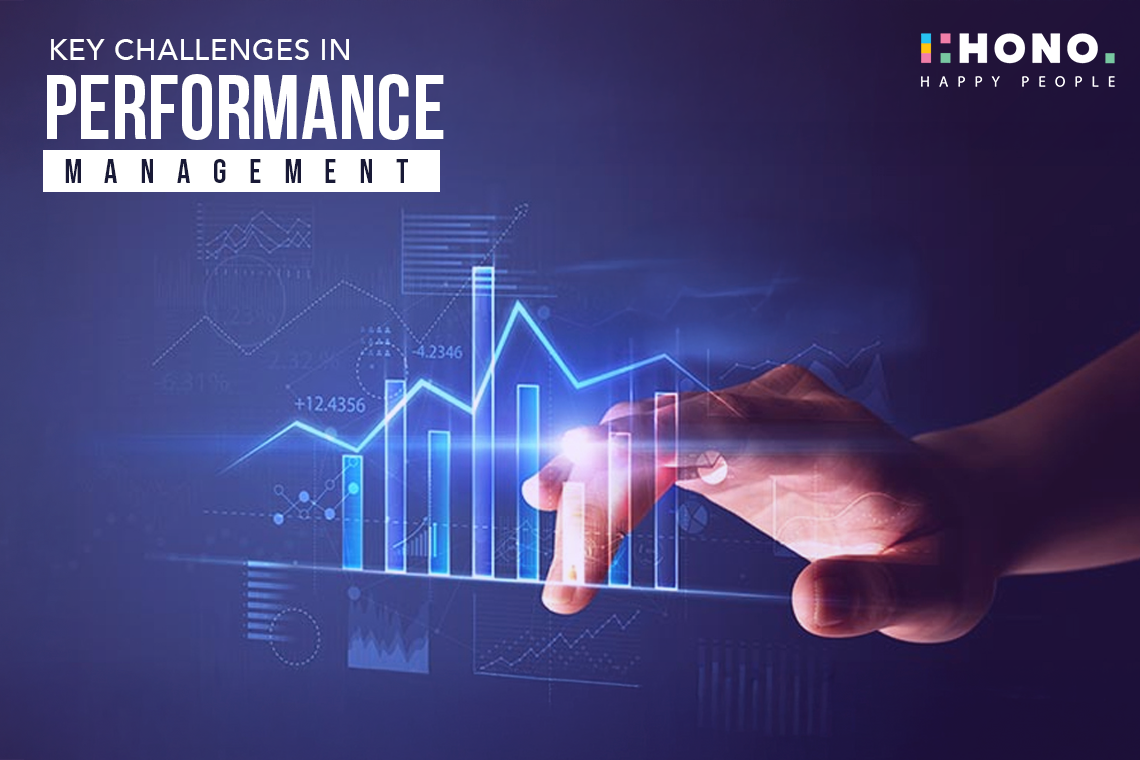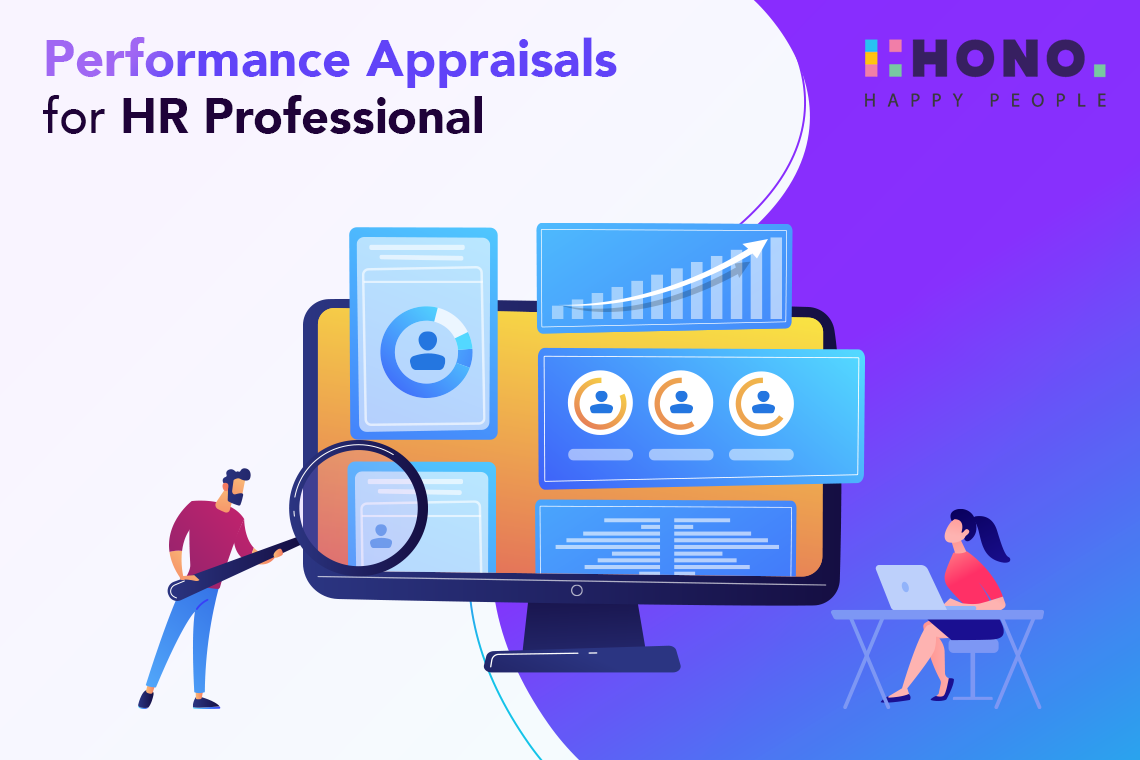Adapt your workforce for what's next
Workforce Planning
The strategic alignment of the right talent with critical roles at optimal costs isn't merely an advantage; it's the foundation of organizational resilience and expansion. At HONO, we recognize that steering through these shifting sands requires a fresh approach to managing, optimizing, and empowering human resources. Instantly gauge the financial implications of your workforce choices and enable diverse headcount plans tailored to specific events or strategies. With HONO, you’re not just planning; you’re future proofing.
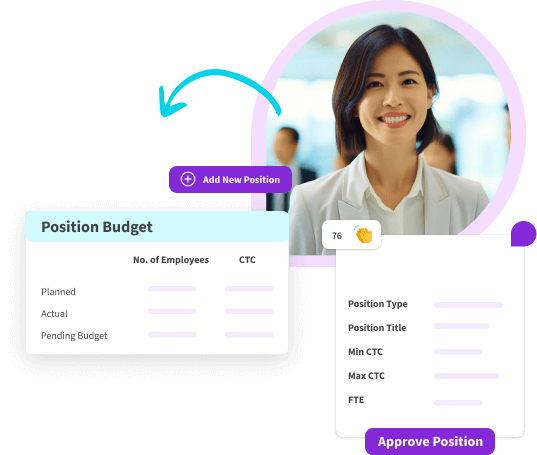
Position Management
HONO’s Position Management module is your key to unparalleled efficiency and strategic alignment in human resources. Designed for dynamic organizations aiming for growth, innovation, and adaptability, this module stands as a cornerstone of HR management for the future of work.
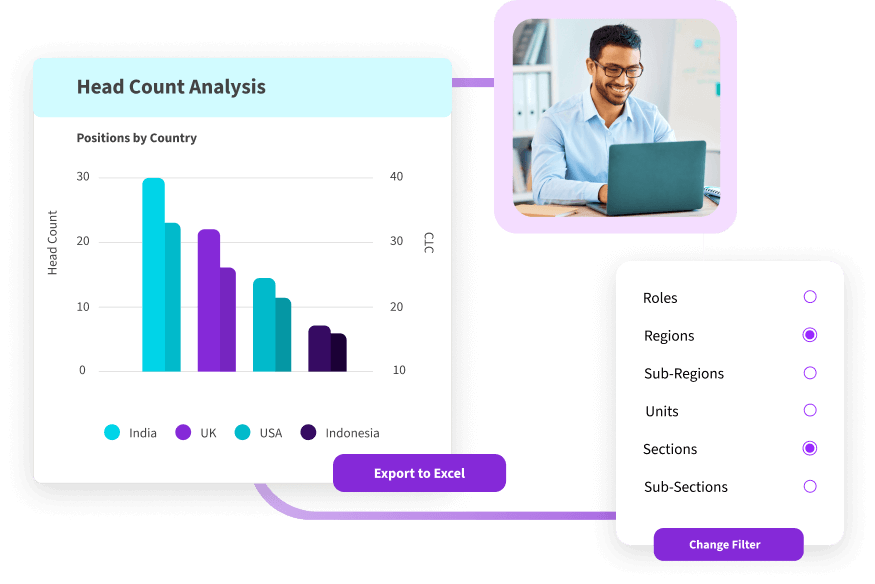
Build a Future-Ready Workforce with Position Management
Define Roles with Ease:
Attach job attributes to positions, not people.
Slash Errors, Save Time:
Automate requisition forms with position-linked data.
Clarity at a Glance:
Build a visual org chart for instant insights.
Hire & Onboard Seamlessly:
Sync data from recruiting to onboarding.
Control Costs, Ensure Fairness:
Set salary grades by position.
Plan Ahead, Stay Agile:
Track vacancies and develop talent proactively.
"HONO has transformed the way we work. We now have an end-to-end integrated HR value delivery system."
- Saurabh Sanyal, Ex- Head - Rewards, CoE, Corporate HR, Spencer’s
Empower Your Strategy with Dynamic Position Creation
Our intuitive platform allows you to categorize, and control positions with unmatched ease. From full-time roles to internships, every position is a building block of your organization's success, meticulously designed with our module.
A 360-Degree View of Every Role
Track every detail of your positions—past, present, and future. HONO offers a comprehensive dashboard for monitoring categories, incumbencies, and the evolutionary journey of each role, enabling data-driven decision-making.
Strategize with Smart Headcount Controls
Navigate the complexities of headcount planning with our position control feature. Align your workforce strategy with real-time insights and proactive planning tools to maintain the perfect balance between ambition and resource allocation.
Secure Your Future with Strategic Successor Planning
Our integration with Succession Management molds the future of your organization, ensuring key positions are always backed by ready-and-waiting successors. Prepare for the unpredictable by planning with purpose and precision.
Financial Control to Forecast with Confidence
Link your workforce plans to financial models for accurate budgeting and on-target hiring. Ensure you have the right people in the right roles to meet current and future demands.
Build a Skilled Workforce and Plan for Success
Analyze skill gaps, plan for development, and model what-if scenarios to attract and retain top talent. Turn workforce composition into a strategic asset that supports your long-term business goals.
Agile Contingent Workforce Integration
In the era of the gig economy, flexibility is king. Our seamless integrations equip you to swiftly adapt by engaging contingent workers, ensuring your organization remains resilient and responsive.
-1.png?width=444&height=417&name=nothing-like-positivity-boost-productivity-portrait-young-businessman-working-his-desk-modern-office%201%201%20(1)-1.png)
Unlock the full potential of your workforce
Governance and Control
Data-Powered Governance for Insightful, Accountable HR
Set up a flexible and easily configurable workflow process tailored to fit your organization's unique structure. This setup enables key stakeholders to efficiently establish their own governance structures, ensuring a robust approval mechanism inherent in the system’s architecture. Keep a detailed audit trail of all changes in organizational design, ensuring that each decision is supported by clear, data-driven evidence and transparency.
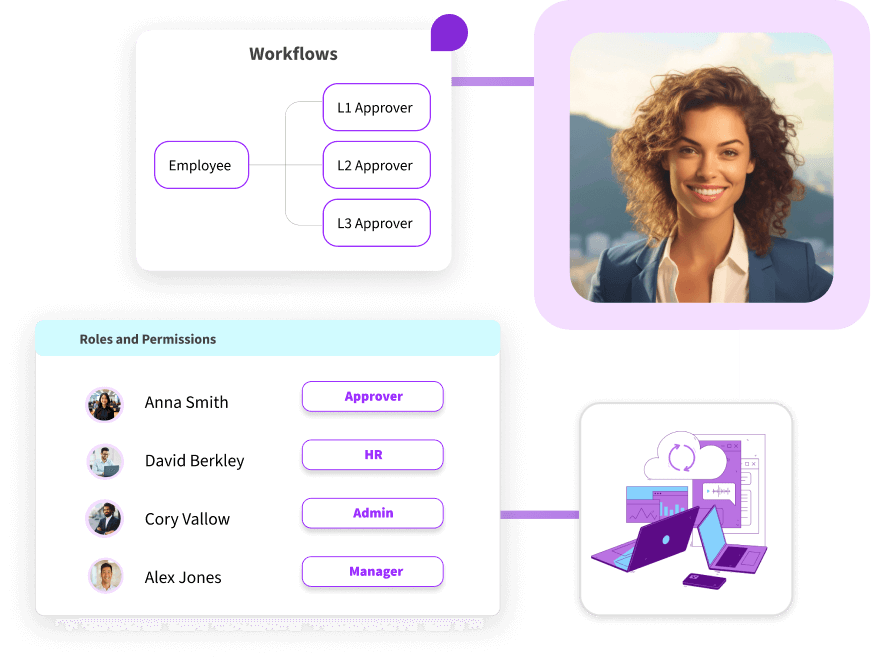
Adapt and Thrive
Our solution puts flexibility at the forefront. Craft custom workflows that mirror your company's structure, ensuring seamless approvals and governance. Track every organizational change with meticulous audit trails for complete transparency and data-driven decision-making.
HR Powered by Data
Discover the true potential of your HR data. Our governance reporting empowers you with the analytics to identify strengths and weaknesses. Track KPIs like turnover, time-to-hire, and engagement to forecast workforce needs and drive strategic, impactful HR management.
Responsibility is Key
Foster a culture of accountability and fairness. Detailed reports on HR policies give you the oversight to ensure effective implementation, preventing HR issues and creating a workplace where everyone feels valued and respected.
Your HR control Center: Secure, Flexible, Insightful
Flexible Workflow Customization
Shape processes to your organization with streamlined approvals.
Governance Reporting
Make data-driven HR decisions for strategic success.
Audit Trail Maintenance
Ensure transparency and accountability with meticulous change logs.
Enhanced Security Measures
Protect your sensitive HR data with confidence.
Our Latest Resources
Try HONO, Transform your Workplace
Frequently Asked Questions
Workforce Planning is the strategic process of analyzing an organization's current workforce and preparing for future staffing needs. It involves gathering and analyzing data to inform decisions regarding the demand for specific skills and roles. Workforce Planning begins with collecting and analyzing data related to an organization's existing workforce, including skills, roles and performance. Based on this data, organizations project their future staffing requirements, taking into account factors like growth, attrition and evolving job roles. Further, it includes assessing the gap between the current workforce and the future requirements. This helps in understanding what skills and roles need to be filled.Once the talent gap is identified, organizations take strategic actions to bridge it. This may involve recruitment, training and development programs to ensure the right talent is in place when needed. The ultimate goal of Workforce Planning is to align the workforce with an organization's strategic objectives, ensuring that the workforce can support business needs and goals.
Workforce Planning is the strategic process of analyzing an organization's current workforce and preparing for future staffing needs. It involves gathering and analyzing data to inform decisions regarding the demand for specific skills and roles. Workforce Planning begins with collecting and analyzing data related to an organization's existing workforce, including skills, roles and performance. Based on this data, organizations project their future staffing requirements, taking into account factors like growth, attrition and evolving job roles. Further, it includes assessing the gap between the current workforce and the future requirements. This helps in understanding what skills and roles need to be filled.Once the talent gap is identified, organizations take strategic actions to bridge it. This may involve recruitment, training and development programs to ensure the right talent is in place when needed. The ultimate goal of Workforce Planning is to align the workforce with an organization's strategic objectives, ensuring that the workforce can support business needs and goals.
Workforce Planning is the strategic process of analyzing an organization's current workforce and preparing for future staffing needs. It involves gathering and analyzing data to inform decisions regarding the demand for specific skills and roles. Workforce Planning begins with collecting and analyzing data related to an organization's existing workforce, including skills, roles and performance. Based on this data, organizations project their future staffing requirements, taking into account factors like growth, attrition and evolving job roles. Further, it includes assessing the gap between the current workforce and the future requirements. This helps in understanding what skills and roles need to be filled.Once the talent gap is identified, organizations take strategic actions to bridge it. This may involve recruitment, training and development programs to ensure the right talent is in place when needed. The ultimate goal of Workforce Planning is to align the workforce with an organization's strategic objectives, ensuring that the workforce can support business needs and goals.
Workforce Planning is the strategic process of analyzing an organization's current workforce and preparing for future staffing needs. It involves gathering and analyzing data to inform decisions regarding the demand for specific skills and roles. Workforce Planning begins with collecting and analyzing data related to an organization's existing workforce, including skills, roles and performance. Based on this data, organizations project their future staffing requirements, taking into account factors like growth, attrition and evolving job roles. Further, it includes assessing the gap between the current workforce and the future requirements. This helps in understanding what skills and roles need to be filled.Once the talent gap is identified, organizations take strategic actions to bridge it. This may involve recruitment, training and development programs to ensure the right talent is in place when needed. The ultimate goal of Workforce Planning is to align the workforce with an organization's strategic objectives, ensuring that the workforce can support business needs and goals.
Workforce Planning is the strategic process of analyzing an organization's current workforce and preparing for future staffing needs. It involves gathering and analyzing data to inform decisions regarding the demand for specific skills and roles. Workforce Planning begins with collecting and analyzing data related to an organization's existing workforce, including skills, roles and performance. Based on this data, organizations project their future staffing requirements, taking into account factors like growth, attrition and evolving job roles. Further, it includes assessing the gap between the current workforce and the future requirements. This helps in understanding what skills and roles need to be filled.Once the talent gap is identified, organizations take strategic actions to bridge it. This may involve recruitment, training and development programs to ensure the right talent is in place when needed. The ultimate goal of Workforce Planning is to align the workforce with an organization's strategic objectives, ensuring that the workforce can support business needs and goals.
